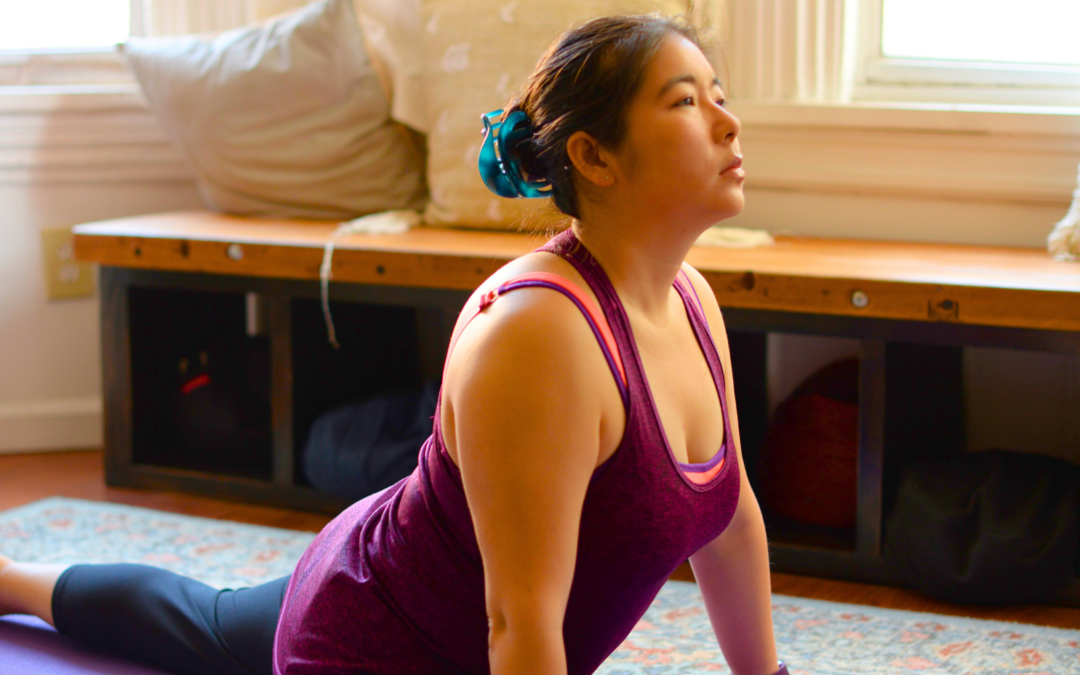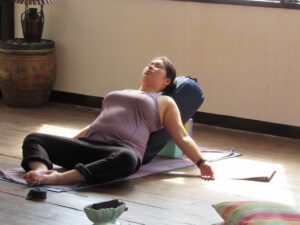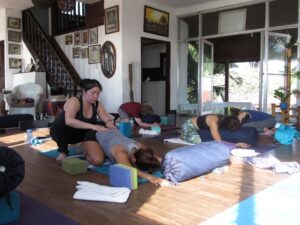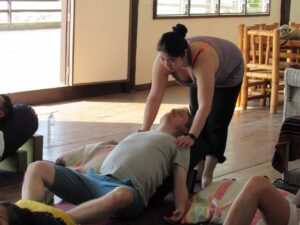 Meet Maylin, one of our teachers at Yoga District who focuses on accessibility, inclusivity, and healing practices. Learn about her journey with yin yoga and how she helps her students practice the best yoga for their bodies. Check out Maylin’s current class offerings at bit.ly/yd-maylin.
Meet Maylin, one of our teachers at Yoga District who focuses on accessibility, inclusivity, and healing practices. Learn about her journey with yin yoga and how she helps her students practice the best yoga for their bodies. Check out Maylin’s current class offerings at bit.ly/yd-maylin.
Yin yoga features poses held for longer periods of time compared to flow and other hatha yoga classes, and the practice incorporates principles of traditional Chinese medicine. It’s a great way to do some deep, meditative stretches to develop real flexibility and mindfulness.
Yin Yoga Journey
I’ve been practicing yoga since college but had only done ashtanga/vinyasa classes. To rebuild my strength after an injury, I took a Yin/Yang class and discovered that I really loved the yin practice. Finding that yin teachers were in short supply, I did extensive yin yoga teacher training and even trained under its founders, Paul Grilley and Sarah Powers.
Now, as a yin teacher, I love sharing my practice with others. Not only does this practice provide physical, energetic, and mindful benefits, it encourages each student to customize poses to their bodies (1). For example, in yin yoga, we can all be in slightly different poses when working on hamstrings. Each of us utilizes props as we see fit to support ourselves in our poses. Since we hold yin poses for several minutes, I have time to work with students individually to make their poses optimal for their bodies.
Yoga for All
A lot of people tell me they can’t do yoga because they aren’t flexible, which is a huge misconception. My teacher Bernie Clark is famous for saying, “We do not use the body to get into a pose – we use the pose to get into our body.” I encourage people who haven’t tried yoga to not worry about looking “perfect” in a pose or whether they can touch their toes. Yoga is about getting in tune with body and breath. You may eventually find some mindfulness and energetic benefits as well.
My yin yoga training has taught me a lot about skeletal variation. Everybody has a unique skeletal structure and we may need to adjust poses accordingly (2). For example, I have a long torso and short arms, so it’s impossible for me to touch my hips in the starting position of a bridge pose. I can come into a traditional bridge pose, but I’ve learned that I can get into a much deeper backbend and feel more supported with my feet further apart.
Our skeletal structures may also limit us when doing certain poses. For example, I admit that even as a yoga teacher, I cannot do a headstand because of the structure of my shoulders and length of my arms. In a supported headstand, I learned that my head was hitting the ground first just by a bit, which is why I could never figure out how to leverage my arms to support me in the inversion. In my classes, I incorporate teaching with skeletal variation (i.e. functionally). I will be pursuing more training in functional vinyasa and hope to share this approach when teaching vinyasa as well.
Teaching Yoga
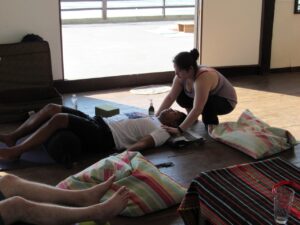 I love that I get to teach a variety of students in my classes. I strongly believe in making my yin and yin/yang classes accessible to all ages, body types, and conditions. It’s inspiring that so many students, particularly those with injuries and conditions, are willing to try my classes and trust me to guide them in their practice.
I love that I get to teach a variety of students in my classes. I strongly believe in making my yin and yin/yang classes accessible to all ages, body types, and conditions. It’s inspiring that so many students, particularly those with injuries and conditions, are willing to try my classes and trust me to guide them in their practice.
In my classes, the top requests I get from students are to work on hips and shoulders. These areas carry a lot of tension and emotion in our bodies. Prior to COVID-19, I would often do some gentle adjustments and reiki on my students during yin poses. I feel my students’ energy change during child’s pose, figure four, or sleeping swan — a yin version of pigeon (3). They tend to release stress during shoulder openers, such as supported heart-opener, supported fish pose, or simply savasana (4 and 5).
Sources
- Benefits of Yin, https://www.yogajournal.com/yoga-101/types-of-yoga/yin/yin-yoga-2/
- A Lesson in Anatomy: Why Your Practice Won’t Look Like Anyone Else’s, https://yogainternational.com/article/view/a-lesson-in-anatomy-why-your-practice-wont-look-like-anyone-elses
- Sleeping swan pose, https://www.yogapedia.com/definition/9618/sleeping-swan-pose-yi
- Supported fish pose (Matsyana), https://www.yogajournal.com/poses/modify-fish-pose-joy-contentment/
- Savasana, https://www.yogapedia.com/definition/6582/savasana

